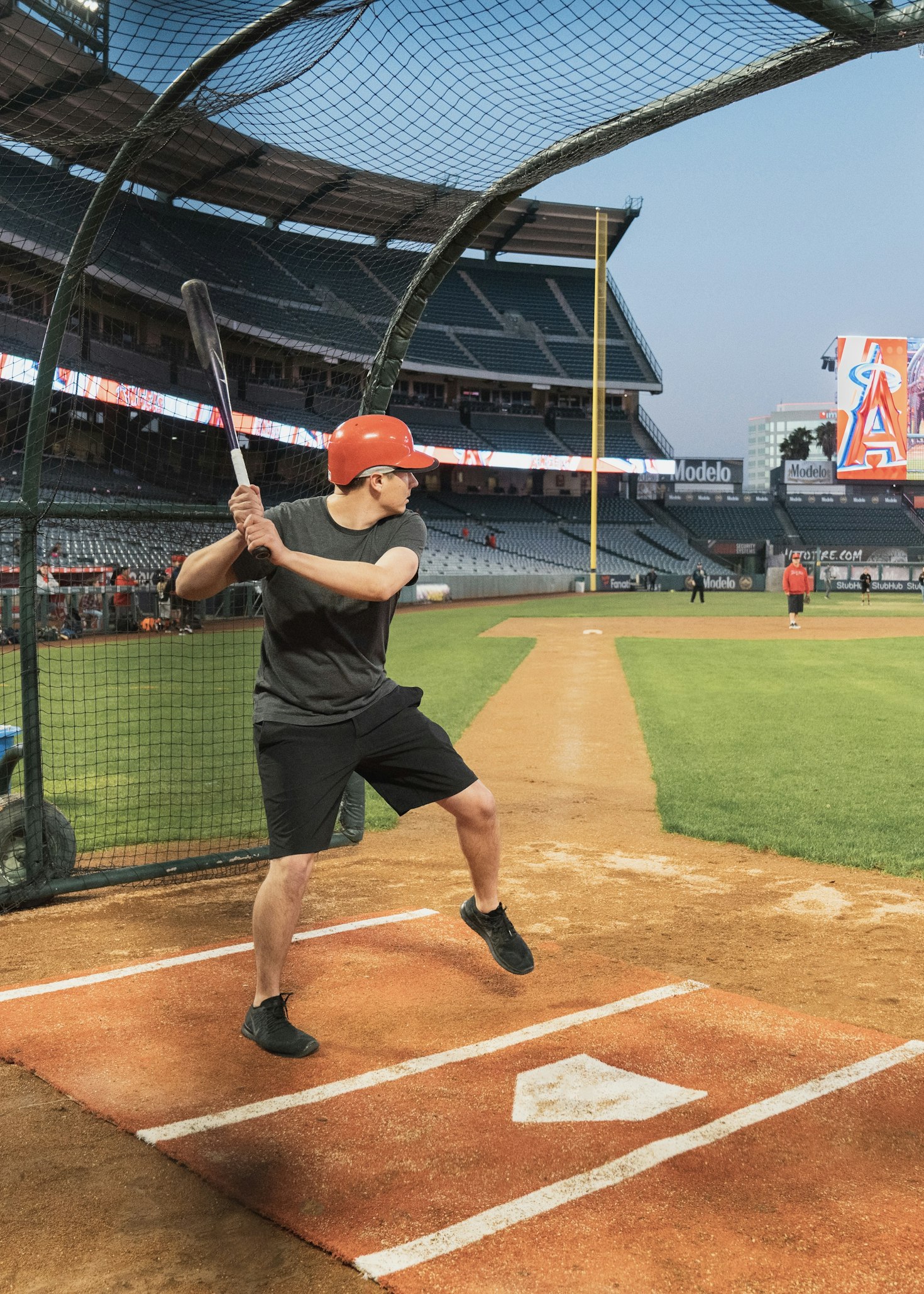Do you know the rules of baseball? If you feel like it’s a bit complicated or you’re not sure where to start, don’t worry! Here, I’ll explain the basic rules commonly used in Japan in a simple and fun way that anyone can understand.
Actually, I’m not a baseball player myself—I’m just a big fan who loves cheering from the stands. That’s why I want to share the joy of baseball with you from the same perspective, making it as easy and enjoyable as possible!
- Basic Rules
- Flow of the Game
- Key Rules
1. Basic Rules
⚾️-1. Objective of the game
- Baseball is a sport where two teams compete to score more runs than their opponent.
- A run is scored when a player rounds all the bases and safely returns to home plate.
⚾️-2. Structure of a BaseBall Field
- A baseball field is divided into two main areas: the infield and the outfield.
- Infield: A diamond-shaped area in the center of the field where the bases are located.
- Outfield: The grassy area beyond the infield, where outfielders play defense.
- Placement of Bases:
- There are four bases positioned at each corner of the diamond.
- Home Plate: The starting and ending point where runs are scored.
- First Base: The base the batter runs to first after hitting the ball.
- Second Base: The base located at the center of the diamond.
- Third Base: The final base before returning to home plate.
- Runners advance through these bases in order, and a run is scored when they successfully return to home plate.
- There are four bases positioned at each corner of the diamond.
⚾️-3. Team Composition
- A baseball team consists of 9 players.
- Defensive Positions:
- Pitcher: The player responsible for throwing the ball to the batter.
- Catcher: The player who catches the balls thrown by the pitcher.
- First Baseman: The player who defends first base.
- Second Baseman: The player who defends second base.
- Third Baseman: The player who defends third base.
- Shortstop: The player who defends the area between second and third base in the infield.
- Left Fielder: The player who defends the left side of the outfield.
- Center Fielder: The player who defends the central area of the outfield.
- Right Fielder: The player who defends the right side of the outfield.
- Defensive Positions:
⚾️-4. Switching Between Defense and Offense
- In baseball, teams alternate between defense and offense.
- Defense: The defensive team aims to get outs by pitching, catching, and preventing runners from reaching the bases.
- Offense: The offensive team tries to score runs by having the batter hit the ball and advance around the bases to return to home plate.
- One inning is completed when both teams have played defense and offense once. A standard game consists of 9 innings, but if the score is tied, extra innings may be played.
2. Flow of the Game
⚾️-1. Innings
- A baseball game consists of 9 innings.
- Each inning is divided into two halves: one for offense and one for defense.
- Offense: The team tries to score runs by having the batter hit the ball and round the bases to return to home plate.
- Defense: The team tries to prevent the opposing team from scoring by getting them out.
⚾️-2. Offense (Batting)
- The team on offense sends its batter to hit the ball with the bat.
- After hitting the ball, the batter runs around the bases to eventually reach home plate to score a run.
- When the batter hits the ball, they start running to first base, then to second base, third base, and finally back to home plate.
- A run is scored when the batter successfully returns to home plate.
⚾️-3. Defense (Fielding)
- The defensive team’s job is to get the batter out in several ways:
- Fly Out: The batter hits the ball into the air, and a defensive player catches it before it hits the ground.
- Ground Out: The batter hits the ball along the ground, and the defensive player fields it and throws it to the base before the batter arrives.
- Strikeout: The pitcher throws three strikes, and the batter does not hit the ball.
- The defensive team tries to get three outs to end the inning and switch places with the other team.
3. Key Rules
⚾️-1. How to Get an Out
- In baseball, the defensive team gets an out by stopping the offensive team’s players. Here are some common ways to get an out:
- Strikeout
- The batter is out after three strikes. A strike is a pitched ball that the batter does not hit.
- Fly Out
- If the batter hits the ball into the air and the defensive player catches it before it hits the ground, the batter is out.
- Tag Out
- If a runner is not on a base and the defensive player touches them with the ball, the runner is out.
- Force Out
- When a runner is forced to run to the next base, and the defensive team gets the ball to that base before the runner arrives, the runner is out.
- Strikeout
⚾️-2. Scoring System
- In baseball, a run is scored when a player (runner) successfully runs around all four bases and returns to home plate.
- The player must touch first base, second base, third base, and finally home plate to score 1 run.
⚾️-3. Strikes and Balls
- A pitched ball is either a strike or a ball.
- Strike Zone: The area over the batter’s plate, from the batter’s knees to their chest. If the pitcher throws the ball within this area, it is a strike.
- 3 Strikes: The batter is out if they receive three strikes.
- 4 Balls: If the batter gets four balls (pitches outside the strike zone), they get to walk to first base for free.
⚾️-4. Hits and Home Runs
- A hit is when the batter strikes the ball, and it lands in fair territory (within the play area), and the batter reaches first base safely before the defense can catch the ball.
- Single: The batter reaches first base.
- Double: The batter reaches second base.
- Triple: The batter reaches third base.
- Home Run: The batter hits the ball over the fence and runs around all the bases back to home plate. A home run scores at least one run, and any runners on base also score.


At this point, you might be wondering, “What comes next?” Or perhaps, “How will I start applying these rules while watching a game?” That’s where the real fun begins! As you continue to watch games and follow along with the rules, you’ll start noticing the different strategies players use, the rhythm of the game, and how each play contributes to the overall excitement. Baseball isn’t just about knowing all the rules—it’s about experiencing the game and appreciating its nuances. Don’t worry if you don’t catch everything at first. With each game, you’ll start to see more and more of what makes Japanese baseball unique and thrilling.
Summary!
Now that you’ve learned the basic rules of Japanese baseball, don’t worry if you don’t understand everything right away! Watching games and seeing the action unfold will help the rules make more sense over time. You don’t need to know every rule to enjoy the game. Whether it’s watching a thrilling home run or seeing a pitcher throw a fast ball, you can still have fun! The beauty of baseball lies in these moments. The most important thing is to find your own joy in the game. Whatever that joy is, baseball will surely offer something exciting for you to enjoy!


コメントを残す